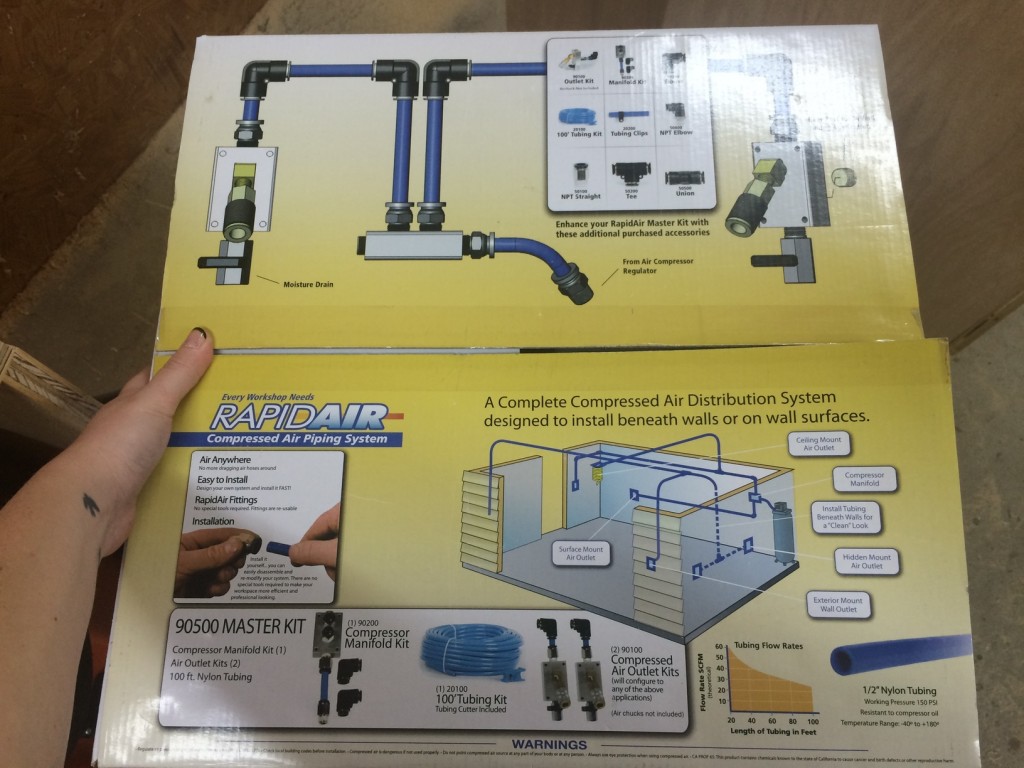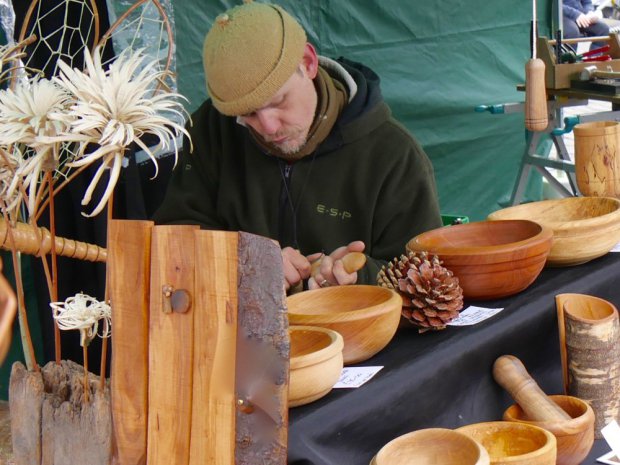Having compressed air in a workshop is a real must. Whether it’s to operate a brad nailer, spray gun, or even an air blower, it doesn’t take long to realize the need for a good compressor and a shop air line system. For the past couple of years, I have been using a small compressor in the shop for operating my brad nailer. It’s been a decent solution to get me by however, it is not large enough to support anything which requires any real flow, like a sprayer or air blower. Additionally, I’ve found the small compressor to be mind-nummingly loud in my shop and it completely kills the groove of the music I am usually playing in the shop. This week I am tackling the task of plumbing my shop with flexible air lines, functioning air outlets, water drain valves, a “Filter-Regulator-Lubricator”, a retractable hose reel, and there’s even an unexpected air compressor installation in there.
Things I Used in This Project:
I started this project by first getting an idea of what was wrong with the old 60 gallon compressor outside of my shop. I quickly realized that a blown head gasket had allowed some moisture to get inside of the compressor cylinder and cause some major corrosion. Unfortunately, it would need to be replaced so I pulled the trigger on a replacement compressor from Northern Tool….big move….I know!
To start the plumbing I ended up finding and purchasing an entire air system kit off the shelf, also from Northern Tool. This kit includes tubing, outlets, and fittings. It was reasonably priced at just under $100 and is definitely better than having to seek out every piece.

Something else I purchased was something called an FRL which stands for Filter/Regulator/Lubricator and what this piece of equipment does is filter the air coming in from the air compressor to remove any moisture, allows me to adjust and regulate the pressure, and also puts in a small amount of oil to keep the tools and line lubricated. This isn’t required if you are setting up your air system but I thought it would be worth the investment since I have a permanent shop set up that I work in on a regular basis. Note: Something important to keep in mind is if you plan to get, or have a pneumatic paint sprayer, the oil in the line from the lubricator will affect your finish. So you will need to run a separate line for the sprayer so that it never goes into the FRL. Since I do not have a sprayer yet I did not incorporate this into the system but when I purchase one I will take off the first fitting and replace it with a T fitting so I can make that split.

I did have to purchase a few additional fittings to connect the FRL to the system. If you buy the same items that I did you will need to purchase a fitting to adapt the 3/8 NPT straight fittings to the FRL.
Fortunately enough the previous owner of my shop already plumbed a line from the compressor house outside of the shop to inside the shop, so all I had to do was make a connection from this line to the inlet of the FRL. On the outlet side I used a “T” fitting so that I can run a line straight down and put an outlet down near the floor.

On the other side of the “T” I ran a line into a 90 and up to the ceiling because I knew that I wanted to mount a hose reel somewhere overhead. I recommend you think about how you want your air system laid out before you even get started. Think about where you want your outlets and think about where, and if, you want a hose reel. A hose reel is handy because I’m able to reach up and grab the line to put my tool on and go anywhere in my shop to use it. This reel is long enough to reach everywhere in my shop plus a little bit outside even. I figured out where I wanted the hose reel mounted and used the hardware that came with it to attach it to my ceiling.

After mounting it I used the fittings that came with the master kit and plumbed my way from the reel to the previous T. Between the reel and the FRL, I placed another T in the line so I could mount my second wall outlet on an adjacent wall. Once I got the house routed to the last wall, I put in a 90 to go down the wall and into an outlet.

On all of these fittings you need to be using a sealer of some sort. You could use “pipe-dope” or you could use Teflon tape. I use Teflon tape because I already have some. The function of the tape is to seal the threads of the fittings so they do not leak after they’re all assembled. If you’re going to be using Teflon tape you need to be wrapping it in the same direction that you would be threading on a nut. This way, when you are threading in the fitting, the threading motion is not going to unravel the Teflon tape; instead it will be squeezing it down into the threads. Once you get your system up and running and turn it on you might hear some air leaking out somewhere. This is an indication that you have a leak. You’ll need to find the leaky fitting and either tighten it up or possibly add more teflon tape to it. I typically wrap the threads two full wraps.

This is a very quick and easy shop update that can be done in just a few hours. The FRL is not absolutely required however it is something that I think is beneficial if you were using pneumatic tools on a regular basis. I think it is going to be really convenient being able to regulate the pressure that my tools are using from inside the shop. Also I won’t have to remember to oil my tools before use, since the lubricator portion of the FRL will take care of it for me. However if you do not want to invest in an FRL then know that you can completely skip over this or add in on later.
Overall I spent right at $200 for everything which I don’t think is bad consider the huge convenience that having permanent air hookups in the shop will give me.
If you liked this project and want to stay up to date with what I’m building, then be sure to sign up for my email newsletter and you’ll get an email when I post something new. See you soon!
*Disclosure: Some links in this email are affiliate links meaning, I may get a commission if you make a purchase. Thanks for your support in this way!
The post How to Plumb a Shop for Air appeared first on Wilker Do's.
SOURCE: Wilker Do’s – Read entire story here.



